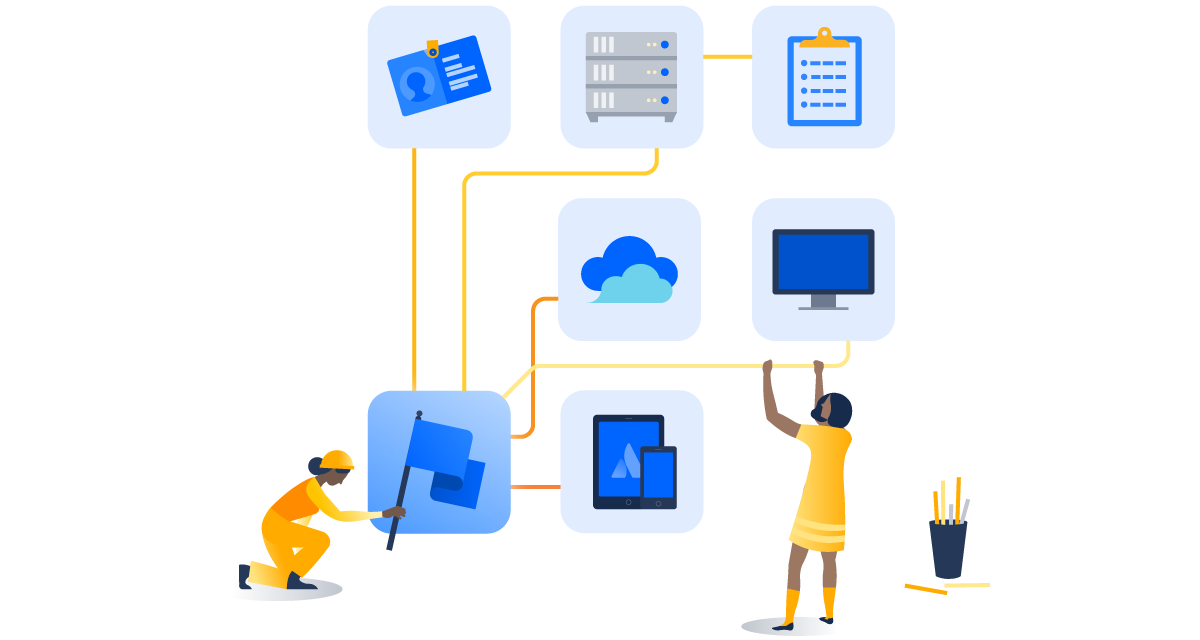4 reasons asset management software matters more than ever
Why every organization should get strategic with their data.
As co-founder and CEO of Riada for over a decade, I’ve worked with tons of organizations looking to manage their assets. Whether it’s ITSM or another use case, pairing Riada’s Insight with Jira Service Desk has helped many clients gain control of their data. We recently extended these capabilities to cloud customers by launching the Insight Asset Management app for Jira Cloud.
This is an exciting time in asset management, contrary to traditional notions of the space. CMDBs (configuration management databases) were once seen as necessary evils, usually doomed to languish as data graveyards. That’s far from the case today; now, smart asset management systems are the heart of any modern organization. Asset management makes data accessible, meets rising expectations around value delivery, enables service management workflows across an enterprise, and allows teams to focus on what matters most. Here are four reasons every organization should get strategic about asset management.
1. Asset management software is critical to everyday operations
Tracking laptops and licenses is a good place to start managing your assets. Begin by bringing in basic IT information – maybe on the servers in your IT department – and then gradually add more. Integrate your HR or legal systems. Import metadata from around the organization. Too often, people limit their thinking on asset management to IT, but you should consider all the valuable elements of your organization. That could be hardware, it could be compliance work, it could be your vehicle fleet. These are all assets, all data worth tracking.
Eventually, your asset management system becomes your single source of truth. Asset management software gives you control over your business, whether it’s simple IT assets or organizational intelligence, business relationships, compliance situations, facilities items, HR stuff, finance matters, or any other heavy vertical. Ultimately, you can model any part of your organization from the data and make better decisions.
2. Better data availability leads to innovation
As DevOps and SRE principles become more influential, modern teams face increased pressure to ship changes quickly without compromising reliability. Asset management software paints a comprehensive picture of what tools and systems are available and how they can be used most effectively. You can import data from service providers and get automatic updates so you know what you’re using, what you could use, and what is no longer necessary.
As teams work autonomously, asset management software also provides freedom and flexibility to innovate with less risk. With the right data from a CMDB at their fingertips, teams can move with speed and predict the impact of changes before they happen. By democratizing access to insights, the organization gains a competitive edge, delivering value more quickly.
3. IT should be the launchpad for a responsive service culture
Take a look at successful IT teams and how they’re running things. IT teams are often the first to embrace automation, tracking, and service workflow management. They’re in a golden position to provide value to the broader organization.
For quite some time, I’ve seen organizations embrace ESM (enterprise service management), extending service management processes and tools beyond IT. Though ESM has just recently been recognized by analysts, we’ve seen asset management outside of IT for a long time. What really counts isn’t the kind of assets you’re populating a CMDB with, but the data you’re able to leverage from your asset management system. Customers manage assets ranging from fleets, to fish, to insurance, to musical instruments.
The Peabody Institute at Johns Hopkins University extended their service management beyond IT to streamline their piano maintenance process. Now, a requester visits the service portal to record information on individual instruments, adding photos and descriptions when necessary. The CMDB maps specific locations of various pianos in the inventory, cutting the workload for maintenance staff who process the service request.
IT teams can help their broader organizations understand the potential of using a service desk portal by framing it as a “service store.” Just as they’ve become accustomed to when dealing with IT matters, end users can browse the portal, shopping for the service they need from various providers across the organization. They are then connected to a workflow that consolidates all the necessary data for a particular service, leading to a better customer experience.
4. Automation can do the heavy lifting
Automation and AI are common buzzwords in IT trend pieces. While they’re important concepts, the big underlying question for organizations to consider is: how can we use our human intelligence for really tricky work?
Automation can relieve overloaded employees from busywork so they can focus on higher-level efforts, and asset management systems are foundational to automation. Without having to relegate time and brain matter to tracking artifacts and understanding dependencies, employees can focus on what matters to the organization.
Moreover, using asset management and automation can help organizations weather turnover. For example, I have clients undergoing digital transformations to modernize their software stacks. In some cases, humans are holding necessary organizational information and history in their heads; some companies have employees who can’t retire, because they’re forging the connections between where things are and the processes for getting work done. Asset management technology should do this heavy lifting.
Keeping up with the pace of modern innovation demands smarter systems. Whether you’re trying to make better decisions, deliver value more quickly, or get to the higher-level work, always remember to respect, track, and master your data!
Learn how to power up your asset management with Jira Service Desk and Insight.


